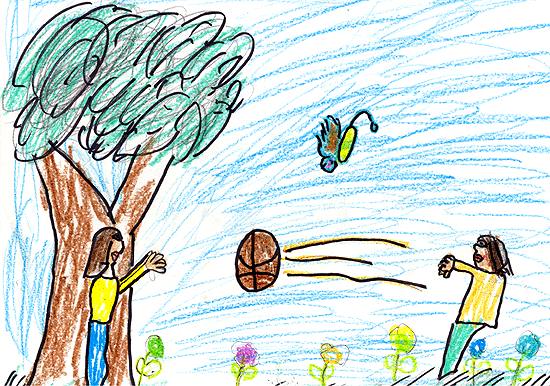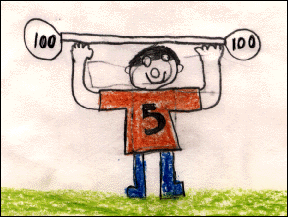
Effective Health and Physical Education for an Ontario Classroom

Ms. Clemmer's Health & Physical Education Classroom
Assessing Students
in Health & Physical Education

The primary purpose for assessment and evaluation is to improve student learning!
There are three fundamental aspects of assessment, which will be looked at more thoroughly below, these are: assessment as learning, assessment for learning, and assessment of learning.
Assessment is used as a means to gather information to reflect student achievement of the curriculum expectations. Assessment as learning and assessment for learning are used to to provide students with descriptive and timely feedback so they may improve their learning. These two aspects of assessment are genearlly integrated into instruction, through the use of learning goals and success criteria that are co-created by teachers and students. Teachers use assessment information to inform their instruction, and plan for next steps based on the results of their assessment. Additionally, assessment as learning and assessment of learning help students develop the skills of peer assessment and self-assessment.
Assessment of learning is the evaluative part of assessment, where teachers judge the quality of student learning throughout a unit and assign a value to that learning. This is intended to summarize the learning that has occured, and communicate to parents, other teachers, employers, and students what the students known and can do in the curriculum area. Assessment of learning is based ona ssesssment of learning that provides evidence of student achievement at strategic times throughout the school year, generally at the end of a learning cycle. The report card grade is determined by assessment of learning, or evaluation, which is decided based on the evidence teachers collect through observations, conversations, and student products, combined with the teacher's professional judgement. The grade reflects the student's most consistent level of achievement, with more recent evidence given more consideration.


Assessment for Learning
Assessment for learning is the diagnostic and formative assessment that reveals what a students current abilities are, including their prior knowledge and experiences. This stage of assessment informs teachers of where they need to begin when planning the unit, and continually assesses students throughout the unit to adjust planning as necessary. Assessment for learning can be based on products from the student, or teacher observation and conversations with the students. The purpose of assessment for learning is to provide students with effective feedback to enhance their learning.
Assessment for Learning Tools:
- KWL Chart: with this assessment tools, students can identify what their current knowledge level is and what they want to know, and at the end of the unit they can go back and write down what they learned
- Observation checkbric: when using a checkbric, have students participate in an acitivty, observe their skills, and give them a 'checkmark' for the skills they possess, and add comments where needed
- Beep Test: assess current fitness levels with the 'beep test' and keep track of student progress through this iPad app
- iPad video recording: have students perform a movement task, and go back and watch the videos to do a thorough assessment of their strengths and needs
- Coach's Eye: this application allows teachers to video-record students, and play back the video in slow motion and add verbal commentary

Assessment as Learning
Assessment as learning is the use of a task/activity to provide students with opportunities to use their assessment to enhance further learning. Self and peer assessments allow students to reflect on their own learning and identify their strengths and needs. This is where students set learning goals and work to meet those goals. This assessment occurs during instruction and is done daily to provide feedback to both students and teachers.



Assessment as Learning Tools:
- Checklists: teachers can use online checklists on their iPad or computers for easy assessment of the learning goals and success criteria
- Thumbs Up: the 'thumbs up' strategy is an immediate indication of whether students understand activities
- Peer and Self-Assessment: have students work in pairs to assess their peers abilities and provide constructive feedback to each other or have students assess their own skills and identify what they need to work on
- Conferencing: use interviews/conferences to have students explain, in their own words, certain skills or ideas and identify how confident they are feeling in their abilities
- Testing: quizzes and tests can be used to identify where students are at, and can be valuable in providing effective feedback to enhance student learning
- Stoplight Method: collect data on student learning by having students post on sticky notes what they learned (green light), their ideas and questions (yellow light), and if anything stopped their learning (red light)
Assessment of Learning
Assessment of learning is the measurement, or evaluation, of student's level of achievement in a curriculum area. This assessment occurs after instruction at a particular point in time and is used to determine what student's know. The results from assessment of learning, or summative assessment, are graded and provide information about the amount of learning that has occurred at a particular point.

Assessment as Learning Tools:
- Rubrics: the rubric is used to grade the student against the learning goal and success criteria created at the beginning of the unit. An example rubric is below. Rubrics assess students ability of a particular skill based on the Ontario Curriculum's achievement chart, which includes the categories: knowledge and understanding, thinking, communication, and application
- Rubric Creation: this app lets you create rubrics, add your class list, video record assessments, add commentary to videos, and assess student performance
- Student Projects: allow students to create new movement strategies from learned material
- Event Tasks: ask students to create something during a single instructional period (gymnastics routine, playing a game, dance routines, warm-up routine, etc.)



Tips for Assessing Physical Education
-
Mastery of Fundamental Movement Skills is necessary if development of higher-level skills is to occur
-
Children who don't master FMS are less able and willing to try learning more complex skills
-
-
Children learn best when they are given specific and timely feedback
-
Feedback needs to include instructional cues that give support in learning new movement competencies
-
-
A friendly and enthusiastic instructional approach is a strong motivation for students!
-
Keep assessment groups small so there is minimal wait time
-
Minimize distractions!
-
Avoid giving feedback to students until they are completely finished their activity/performance
-
Promote self-regulation so students set and reach their own learning goals!
-
Be clear about what is being assessed, and the criteria for assessment
-
There are many ways to assess! Demonstrations aren't the only way -- try incorporating HPE assessment into writing classes!

Assessment Examples for Integrating HPE with Other Curricular Areas
Fifth Grade 'Rap' Lyrics for HPE
Sometimes on the playground, people seem to change
Every once in a while, they seem like they are mean to others
And I think that we should all be nice to one another
Also, when they're playing, people cheat in games
Then they get in fights and call each other names
My favorite thing in PE is playing basketball
The only bad thing about it, is when I trip in fall.
The second best thing is playing freeze tag
And sometimes even my classmates seem to lag.

Integrate HPE assessment with Art! Have students show specific movement skills through drawings!



References
Fundamental Motor Skills: A Manual for Classroom Teachers,1996
Growing Success: www.edu.gov.on.ca/eng/policyfunding/growsuccess.pdf
Mueller, Course Notes, 2015
Ontario Ministry of Education and Training. The Ontario Curriculum, Grades 1-8: Health and Physical Education, Interim Edition, 2010 (revised). ON: Queen’s Printer.
http://www.edu.gov.on.ca/eng/curriculum/elementary/health.html
PE Central: http://www.pecentral.org/assessment/kidsassessmentsmenu.html